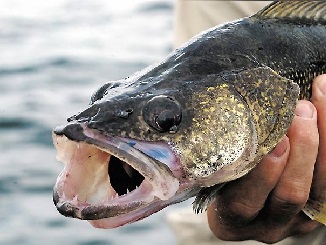 TwinCities Pioneer Press reported – Minnesota anglers have busted through the kill limit for walleye on Lake Mille Lacs, but unlike last year, walleye fishing will remain open, officials announced Tuesday.
TwinCities Pioneer Press reported – Minnesota anglers have busted through the kill limit for walleye on Lake Mille Lacs, but unlike last year, walleye fishing will remain open, officials announced Tuesday.
The decision to keep fishing open — perhaps in violation of American Indian treaty agreements — was made by Gov. Mark Dayton with an eye toward the embattled economy of the central Minnesota lake. Meanwhile, state scientists provided a biological rationale: The famed walleye population is not being harmed.
“I have directed the DNR not to close the walleye fishing season on Lake Mille Lacs, and I have contacted tribal leaders to ask for their understanding and forbearance,” Dayton said in a statement. “The DNR has already imposed a very stringent catch-and-release-only restriction on this season.”
A spokesman representing the eight Chippewa bands with treaty rights to the lake said tribal officials were “disappointed” with the state’s decision but it was too early to discuss what actions, if any, would be taken.
Even though the entire season, which began in May, has been catch-and-release only for walleye, fish still die from being hooked, and soaring temperatures, increased angling pressure, and a hot bite led to a spike in the so-called hooking mortality, DNR officials said.
A fresh analysis by the Department of Natural Resources estimates that 37,922 pounds of walleye had been killed by hook-and-line fishing by the end of July, surpassing the 28,600-pound limit negotiated between the state and American Indian tribes with rights to share the lake’s troubled walleye population.
The walleye population on Mille Lacs has been declining for years for reasons not entirely understood.
Biologists with the Minnesota Department of Natural Resources believe that the most important generation of fish for the future of the lake — walleye that hatched in 2013 — have fared well this summer, said Don Pereira, head of fisheries for the DNR.
“The primary goal of the catch-and-release restriction is protecting young walleye, especially the robust 2013 year class,” Pereira said. “Current data show that only 1 percent of the 2013 fish have been impacted by hooking mortality, which is remarkably low.”
If tribal officials believe the state is violating the court-upheld treaty with eight Chippewa Indian bands, the dispute would eventually lead to top-level talks between Dayton and tribal leaders, a dynamic Dayton indicated he’s aware of.
“Closing the walleye fishing season on Mille Lacs would devastate area businesses and communities,” Dayton said in his statement. “The state’s fisheries experts have assured me that continuing catch-and-release on Mille Lacs will not negatively impact the health of the walleye fishery.
“We will continue to do everything possible, working with area business, community and tribal leaders, to assure the long-term health and sustainable recovery of the Mille Lacs walleye fishery.”
Last year at this time, the state closed walleye fishing after exceeding its limit. The decision to keep it open this year was welcomed by at least some Mille Lacs resort owners.
“If it would have closed, it would have been emotionally and financially devastating,” said Tina Chapman, president of the Mille Lacs Area Tourism Council and co-owner of a resort in Isle.
But the news was not met well by tribal officials, who noted that band members have stayed below the tribal limit of 11,400 pounds.
“As they have done every year, the tribes honored their commitment to stay within their share of the safe harvest limit to protect the lake for generations to come,” said Susan Klapel, commissioner of natural resources from the Mille Lacs Band. “We are deeply disappointed to learn the state will not honor its commitment to do the same.” Here’s her entire statement.
